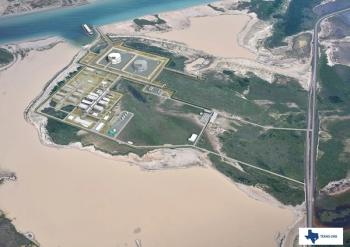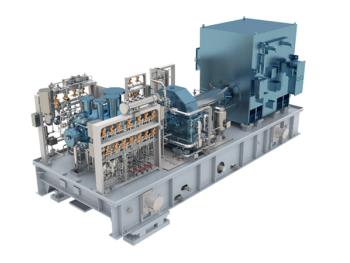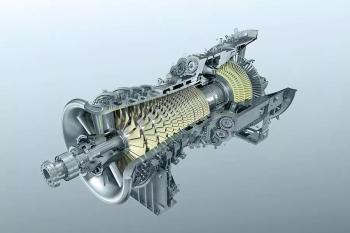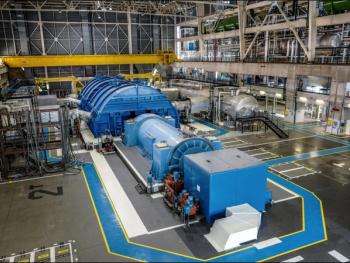
- September/October 2022
LONG-DURATION STORAGE
RENEWABLES REQUIRE SHORT- AND LONG-DURATION STORAGE
During a few very hot and calm weeks in July of 2022, more than 30,000 MW of Texas wind power was operating at less than 8% of rated capacity. At the same time, demand hit record levels. Fortunately, the state scraped by without blackouts. In February of 2021, however, a similar no wind period during an unusual cold spell also knocked out some fossil fuel and nuclear generating capacity. It caused blackouts lasting for days across the state and multiple deaths, mostly due to a lack of heating.
Such occurrences aren’t confined to Texas. It is common for parts of California to run out of power on hot days when there is little wind after the sun goes down, or on hot cloudy, windless days. Northern California, in particular, has suffered rolling blackouts for the last couple of summers. But now Southern California is beginning to experience similar issues.
The popular solution to such problems is battery storage. The basic concept is to place battery farms at strategic points. These batteries would be used to store excess off-peak renewable energy which could then power the grid when wind or solar falter during peak periods. However, batteries are expensive, have a lifetime of less than 12 years, have a large physical footprint, and are practical for only a few hours of energy storage. They are a good short-term emergency power source and will undoubtedly play a role in the future energy mix. But they don’t solve the underlying problem – if the grid is down for more than a few hours, longer duration energy storage is required.
HYBRID LONG-DURATION STORAGE
To accomplish a high penetration of renewable energy on the grid (more than 20-25%) while maintaining reliability, long-duration energy storage systems are required that can store multiple days of energy. Hybrid, long-duration energy storage systems can fill this need.
Like a plugin hybrid car, long-duration hybrid energy storage systems store electricity at off-peak times and return it when needed with the addition of some fuel. And like the plugin hybrid, these systems offer synergy.
- Energy density: the same factor that gives the plugin hybrid much greater range than a full electric vehicle (EV).
Some plugin hybrids allow the engine and batteries to be used together to provide short bursts of power greater than what the battery or engine alone can supply, just as hybrid energy storage systems can return energy to the grid at a rate faster than the maximum charge rate, something batteries can’t do.- As with the plugin-hybrid vehicle, there are CO₂ emissions, but this is largely offset by charging at off-peak times with renewable energy, and the reduced environmental impact from the mining and manufacturing of the equipment compared to the manufacture of lithium ion batteries.
When the battery goes dead on the plugin hybrid the car can still run on the engine. When the stored energy in the hybrid long-duration energy storage system is used up, they can still produce about 30% of their power by burning fuel.- Plugin hybrids cost more than an engine driven car but less than a full electric vehicle –the long duration hybrid energy systems cost more than a peaking gas turbine but less than the same kilowatt-hour battery storage system
CAES STUDIES
Compressed air energy storage (CAES) is a proven method of long duration hybrid energy storage. There are currently two of these systems in operation that have been running for several decades: the 330 MW plant in Huntorf, Germany; and the 110 MW system in Macintosh, Alabama. These installations use off-peak power to compress air that is stored in underground salt caverns. They return more than 120% of the stored power to the grid at peak times by heating the air in a natural gas-fired combustor and expanding the hot, high-pressure air through a turbine driving a generator. The fuel rate is 30% better than that of a modern combined cycle power plant. The main drawback of CAES technology is the requirement for a location with very specific geology.
But CAES isn’t the only game in town for long-duration storage. Several novel approaches to hybrid energy storage technologies are under development. These systems will allow a higher penetration of renewable power while maintaining grid reliability. Each of these systems is turbomachinery intensive.
LIQUID SALT
Pintail Power’s Liquid Salt Combined Cycle system is probably the easiest of these technologies to implement and is currently being marketed. The system uses gas turbine exhaust to pre-heat feed-water and superheat steam. But the hard work of converting the pre-heated water to steam is handled by a steam generator using liquid salt heated by electrical resistance heaters using excess off-peak renewable energy.
This is the same liquid salt that has been used successfully in concentrated solar power (CSP) systems as well as a heat transfer fluid in refinery applications. The salt has a lifetime beyond 20 years. While salt is capable of being heated to well over 1000℉, Pintail’s system limits the temperature to about 800℉ to avoid the need for special alloy steel piping and heat exchangers. When added to an existing combined cycle power plant, it doubles the output and improves the heat rate to less than 5000 BTU/KW-HR (68+% efficiency). Liquid salt combined cycle technology is scalable from under 50 MW to over 600 MW.
LAES INSTEAD OF CAES
Just In Time Energy has devised two approaches to long-duration energy storage, both based on the same technology. Its Optimized Liquid Air Energy Storage System (LAES) is an improvement over traditional LAES technology. LAES systems use off-peak power to make liquid air. At peak times, liquid air is pumped to high pressure, vaporized, heated, and expanded in a turbine to make power. While the basic concept has been around for more than 30 years, there is only a single pilot plant in operation.
Several air separation companies have proposed LAES systems, but all these systems use a regenerator vessel to store the phase change cold from the pumped liquid air as it is vaporized prior to heating in some type of heat absorbing media. This cold is used to reduce the power consumption when making the next batch of liquid air. The problems with this concept are: the regeneration vessel is almost as large as the liquid air storage tanks; it is operating at the pump discharge pressure; and fabricated from expensive cryogenic materials.
The heat rate of these systems ranges from about 3500 BTU/KW-HR to 5000 BTU-KW-HR and they have an energy ratio (on-peak produced electrical energy/off-peak energy consumed) between about .75 and 1.2, depending on the configuration. Energy density ranges from about 320 to 370 KW-HR per cubic meter of stored liquid air.
GAS/ELECTRIC STORAGE SYSTEM
Just In Time Energy’s 105 MW Combined Gas and Electric Storage System uses the same concept as its Optimized LAES system except that the working fluid is liquefied natural gas (LNG) from a pipeline, produced at off-peak times with excess renewable power. These systems store excess renewable energy at off-peak times as LNG. They return electric energy to the grid and gas to the pipeline system at peak times.
As the second expansion in this cycle is down to the pipeline system pressure rather than atmospheric, heat rate is typically less than that of Optimized LAES, but still under 5000 BTU/KW-HR. The energy ratio varies between about .75 and 1.0, Energy density is about 130 KW-HR per cubic meter of storage. This system has two primary revenue streams – the value of the power returned to the grid and the value of moving the natural gas from off-peak to peak times.
Potential applications include new or existing peak-shaving LNG plants as well as LNG import and export terminals. On the export side, this technology could facilitate arbitrage between spot market LNG sales and spot market power sales. Additionally, this could work well in areas such as NY state where there is both a need for on-peak power and gas, and where excess off-peak power and pipeline gas is available.
Another possible application is in natural gas storage sites that use depleted oil or gas production fields (about 80% of the gas storage sites in the U.S.). At most of these storage fields, the discharge pressure decreases sharply as discharge flow increases at peak times. This limits the flow from the field and requires compression power to get the gas into the pipeline system. By taking gas from the field at off peak times and producing LNG with excess renewable energy with the Combined Gas and Electric Storage System, gas can be returned to the pipeline at peak times in combination with the normal flow from the storage field. Concurrently, peak time power can be sold to the grid.
IMPROVING GRID STABILITY
When not producing power, all three of these new energy storage technologies can be used to improve grid stability by adding VARs (Volt-Amps-Reactive) and inertia to the grid. This is achieved by including overrunning clutches between the generators and turbine drivers. These clutches allow the generators to stay synchronized with the grid after the turbine drivers are shut down. Further, clutches placed between turbines and generators allow faster starting and potential spinning reserve credits in certain markets.
This is particularly important in light of the increased presence of renewables and a general trend to decommission coal plants and aging gas turbines plants. Wind and solar power provide very little VARs to the grid and almost no inertia. Low VARs reduces the power factor on the grid. This results in overheating of transmission lines and reduction in the overall power handling capability of the grid. A lack of inertia, on the other hand, limits short-circuit current capability and makes it difficult to maintain a constant frequency.
Articles in this issue
about 3 years ago
COMPRESSOR MAPSabout 3 years ago
DUAL DRIVE COMPRESSORSabout 3 years ago
YASKAWA ENVIRONMENTAL ENERGY / THE SWITCHabout 3 years ago
MYTH: AN ASME PTC-10 TYPE 1 IS BETTER THAN A TYPE 2 TESTabout 3 years ago
SUPERCRITICAL CO2about 3 years ago
2022 TURBO EXPOover 3 years ago
TURBOMACHINERY CONTROLS GO HIGH TECHNewsletter
Power your knowledge with the latest in turbine technology, engineering advances, and energy solutions—subscribe to Turbomachinery International today.




